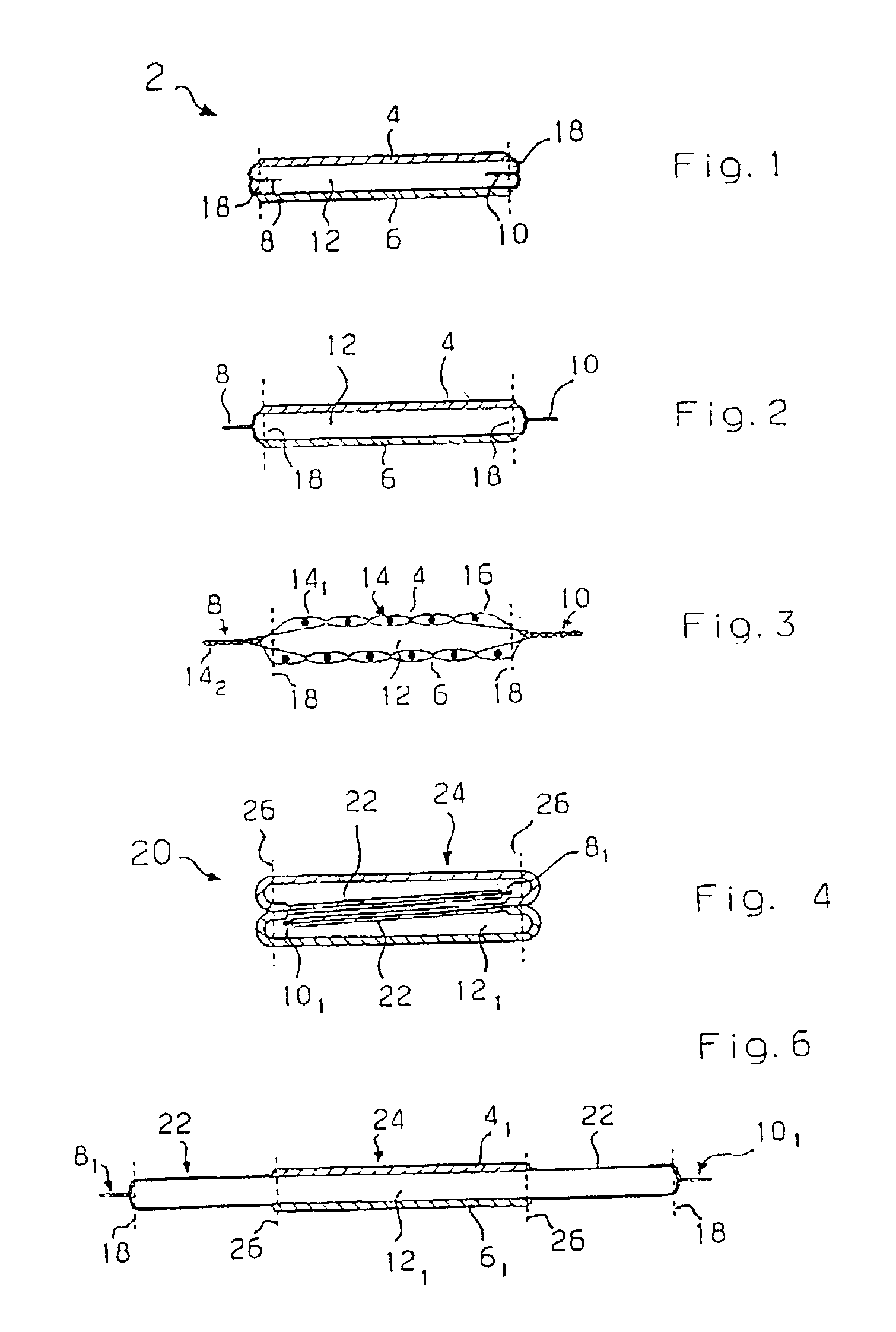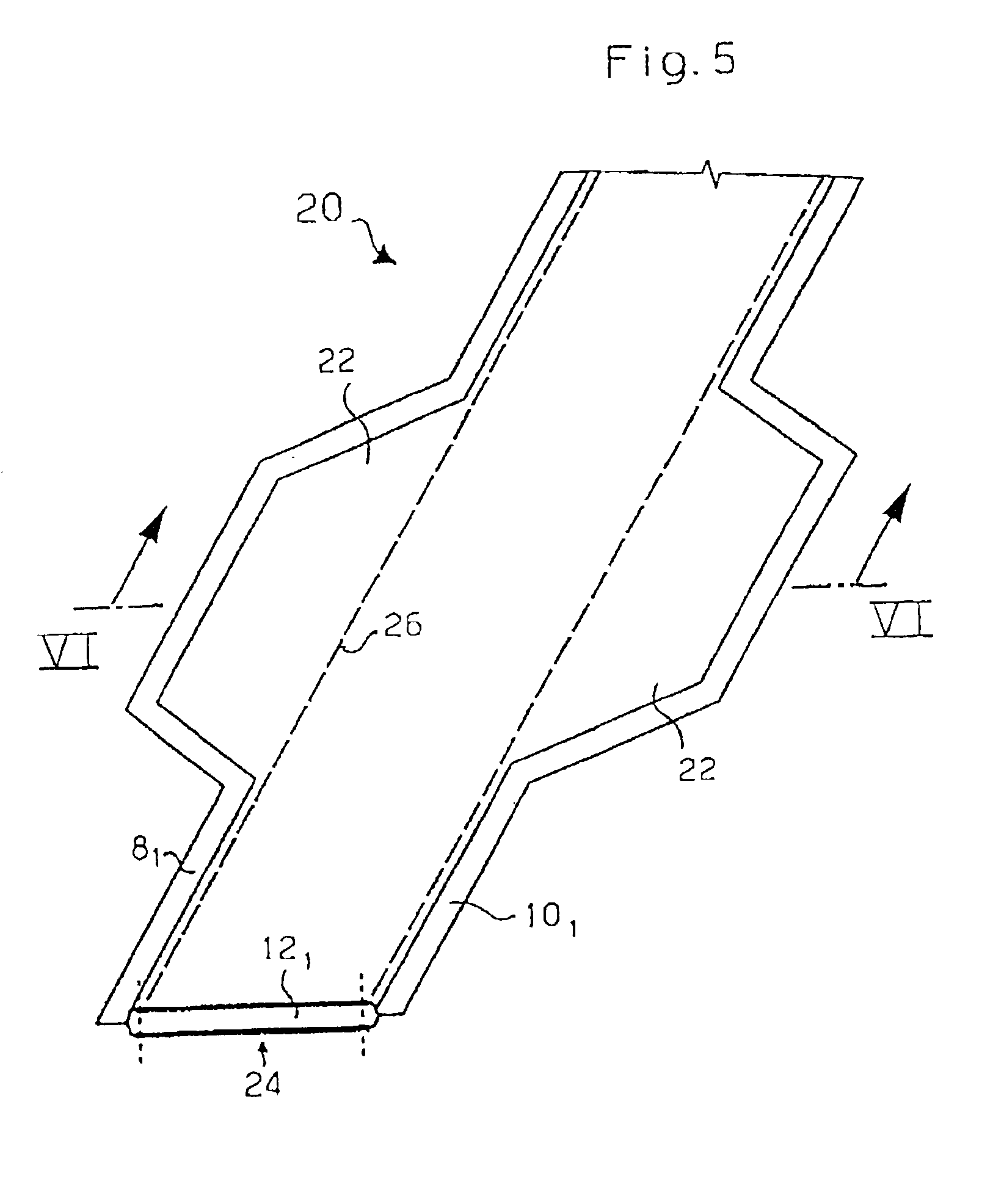Device for producing a tubular belt band that can be turned inside out
a tubular belt and inside-out technology, applied in auxiliaries, looms, textiles and papermaking, etc., can solve the problems of large doubt that a usable wide fabric can be produced, looser fabric structure in the wider area, and relatively coarse structur
- Summary
- Abstract
- Description
- Claims
- Application Information
AI Technical Summary
Benefits of technology
Problems solved by technology
Method used
Image
Examples
Embodiment Construction
[0008]The task of the invention is to provide a device for producing a tubular belt band which can be turned inside out, this device making it possible to produce the belt band easily and efficiently.
[0009]This task is accomplished by a device having a power loom with a shedding mechanism having a reed with parallel dents, a woof insertion device that extends over an entire width of the power loom, and a control unit for controlling the shedding mechanism. The power loom further includes an expander that extends over the entire width of the power loom. The expander has a smaller diameter in a tubular area than in a hem area in correspondence with the belt bands to be produced so that the clamping pressure of the expander is substantially constant over an entire width of the woven fabric web. The device further includes a thermal cutting device having cutting heads operative to cut out the belt bands in the hem area from the woven fabric web. First, because the belt band is produced ...
PUM
 Login to View More
Login to View More Abstract
Description
Claims
Application Information
 Login to View More
Login to View More - R&D
- Intellectual Property
- Life Sciences
- Materials
- Tech Scout
- Unparalleled Data Quality
- Higher Quality Content
- 60% Fewer Hallucinations
Browse by: Latest US Patents, China's latest patents, Technical Efficacy Thesaurus, Application Domain, Technology Topic, Popular Technical Reports.
© 2025 PatSnap. All rights reserved.Legal|Privacy policy|Modern Slavery Act Transparency Statement|Sitemap|About US| Contact US: help@patsnap.com



